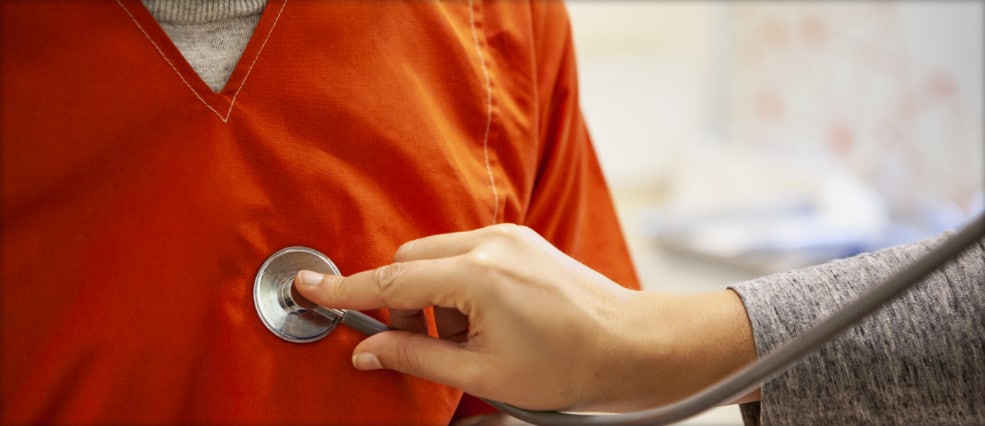Correctional Health

A person who is ‘justice system*-involved’ is any person who is currently or has ever been arrested or incarcerated in a detention or correctional facility. This term also includes those reentering their communities after detention or incarceration, including those on parole or probation.
Correctional health encompasses all aspects of health and well-being for adults and juveniles who are justice system*-involved, from their arrest, during detention or incarceration, and through the time they return to their community (called “reentry”). Correctional health also includes the health of families and communities of persons who are justice system-involved and of the administrators and staff who work in facilities.
Persons who are justice system-involved are more likely to experience risk factors for HIV, viral hepatitis, sexually transmitted infections (STIs), tuberculosis (TB) and latent TB infection (LTBI), and the prevalence of these infections and diseases is higher than in the general population. Additionally, a high proportion of people with justice system involvement have a history of unstable housing and mental health and substance use disorders, which increases vulnerability and risk for HIV, viral hepatitis, STIs, and TB/LTBI. This puts many in need of linkage to substance use and mental health treatment, employment, and permanent housing upon release. Justice-involvement also leads to family and community instability and adverse childhood events, with 1 in 28 children having a caregiver who is incarcerated.
Taken together, these multiple health conditions and social determinates of health contribute to the health disparities found in this population and their communities.
CDC has worked to provide people who are justice system-involved, correctional facility staff, public health professionals, community organizations, and anyone else with an interest in correctional health with data, testing and treatment guidelines, educational materials, and other correctional health resources.
How CDC Supports Correctional Health:
- Funds partners working with health departments to improve health in the communites of justice-involved persons, particularly related to priority pathogens such as HIV, hepatitis, STIs, and TB.
- Develops programs and guidance that address community health disparities and social determinants of health (SDOH).
- Develops intake screening and treatment guidance for use by clinicians/administrators of correctional health services and health departments.
- Works with state, tribal, local, and territorial health departments to investigate disease outbreaks.
- Develops and provides useful health education materials for staff and justice-involved persons.
- Supports projects that improve the continuity of care for people returning to their communities.
- Offers policy and planning guidance that support efforts to improve the continuity of care within communities.
- Identifies/monitors cases and potential exposures to HIV, viral hepatitis, STIs, TB, and other pathogens among persons who are justice-involved or work in correctional facilities.
* “Criminal legal system” may also be used as an alternative to “justice system” to reflect historic and current challenges to achieving justice in the U.S. criminal legal system.
